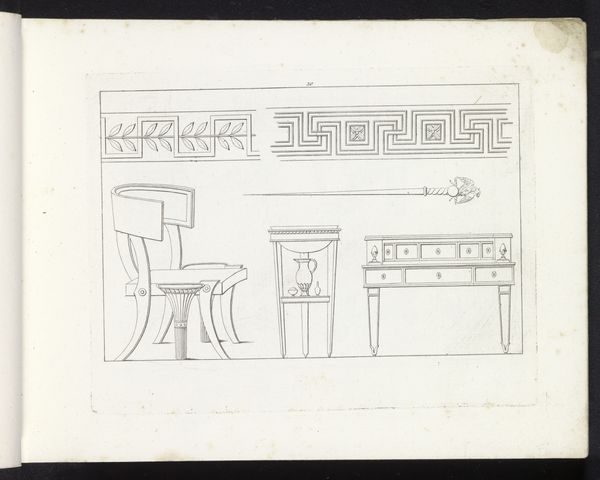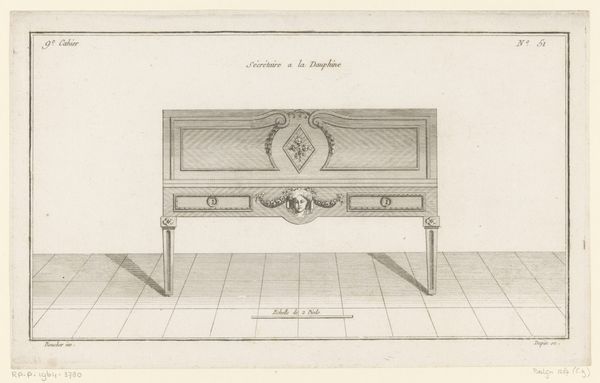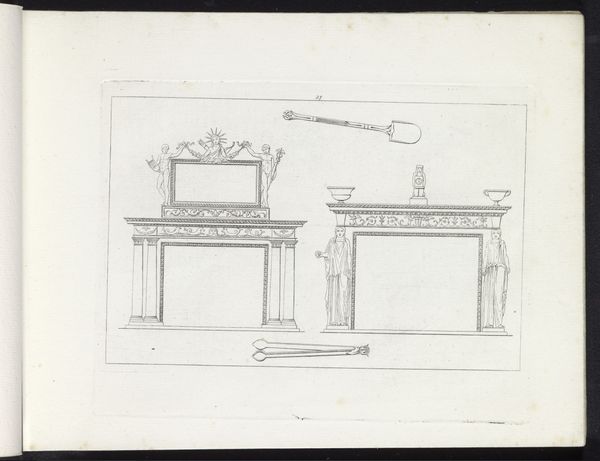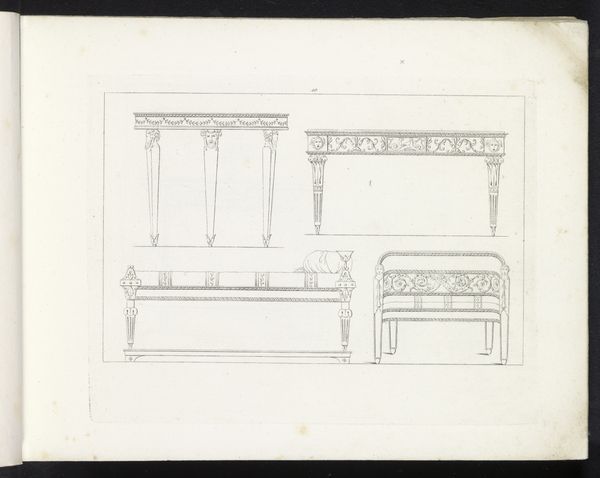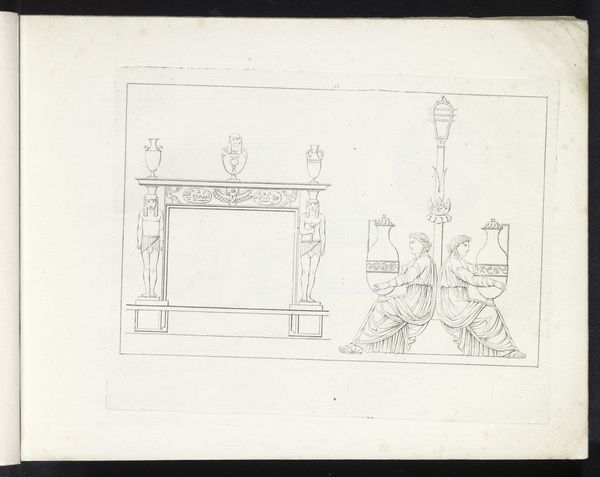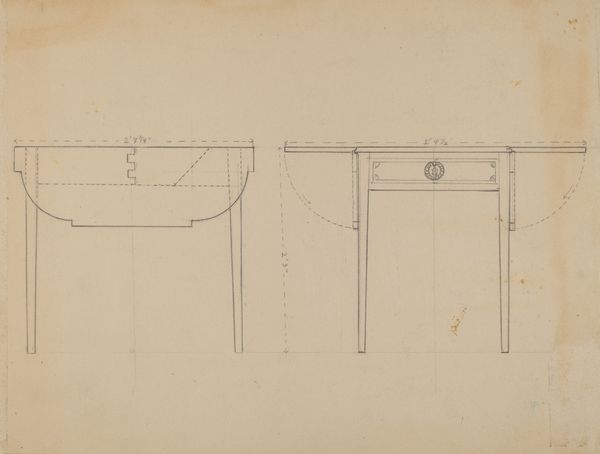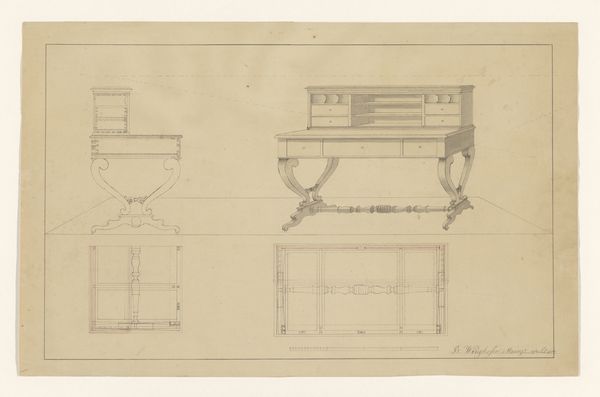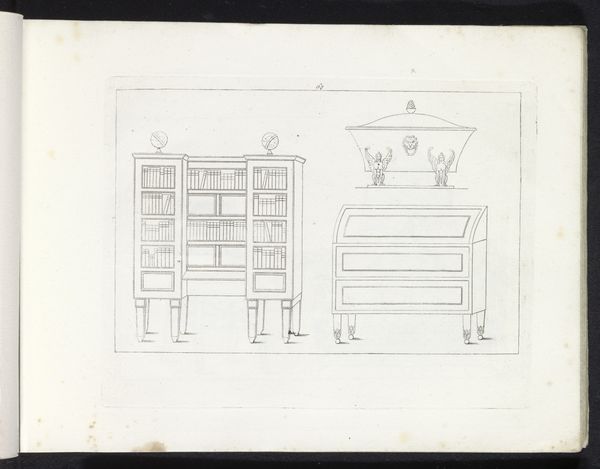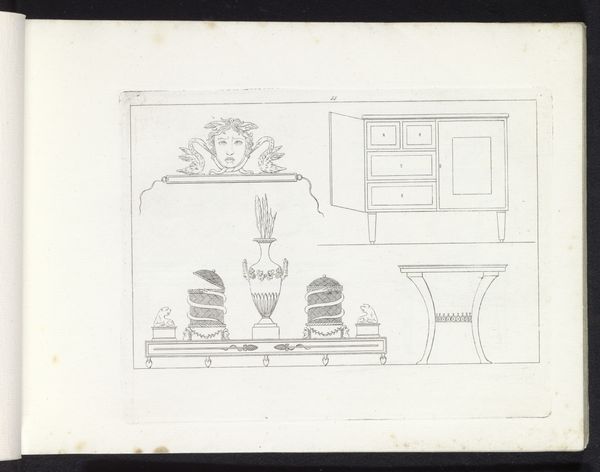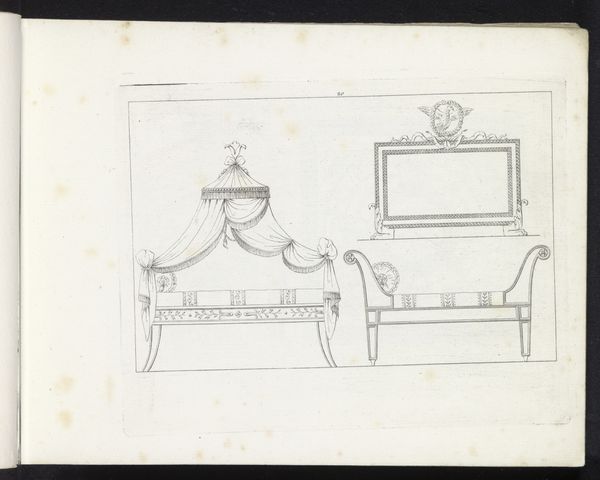
drawing, paper, ink
#
drawing
#
neoclacissism
#
paper
#
ink
#
geometric
Dimensions: height 165 mm, width 214 mm
Copyright: Rijks Museum: Open Domain
Editor: Here we have Pietro Ruga's "Bed en twee kasten" from 1817, an ink drawing on paper showcasing furniture designs. It feels incredibly formal and precise. What historical elements should we be considering to properly frame this piece? Curator: Well, given the neoclassical style and the date, consider the sociopolitical climate after the Napoleonic Wars. There was a widespread desire for order, stability, and a return to idealized forms of the past, influencing decorative arts significantly. This desire reflected in the rigid symmetry and clean lines present in Ruga’s designs, intended for public consumption and demonstrating sophistication. Do you see that playing out in the composition? Editor: Definitely! It’s as if the furniture embodies a sense of civic virtue. So, would these designs have been aspirational, signifying status and refined taste? Curator: Precisely. These designs were likely presented to potential clients, shaping perceptions of luxury and social standing. Note the subtle details—the sphinx-like supports on the bed or daybed. The inclusion of these classicising motifs broadcasts erudition and implies that the commissioner shares in, and thus perpetuates, this system of taste. It highlights the intricate dance between the creator, the patron, and the broader cultural values being projected. Editor: That’s fascinating, how the furniture transcends mere functionality and becomes a symbol of social identity! Thinking about this, how museums curate design choices adds a whole new layer. Thanks for illuminating that! Curator: My pleasure. Considering the design within its historical context adds a new depth, making us aware of design's political role.
Comments
No comments
Be the first to comment and join the conversation on the ultimate creative platform.
